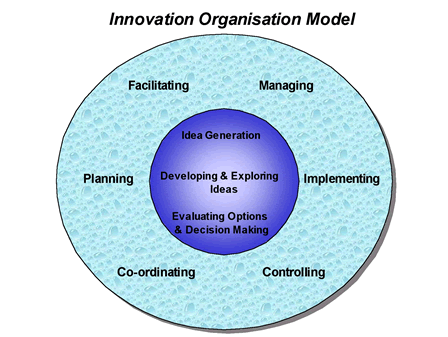innovation and creativity
Managing the process of innovation is absolutely critical for success. Understanding how ideas are generated, sponsoring creative thinkers, allowing people freedom to think and utilising the full breadth of your talent bank is an important part of the role of any leader. One of the key steps in the leadership of innovation and creativity is the understanding both of the process and the way creative people operate. What makes a small idea big in an organisation and how to identify and process that idea into competitive advantage are important stages in innovation.
Organisations need a methodology to convert those small seeds of ideas into blossoming plants. Conventional marketing techniques and research data are the standard ways of approaching market growth. These methodologies, whilst proven, will deliver growth but will they deliver the jewel that will seriously damage the health of your competition? Companies need to manage serendipity in order to remain competitive. Today's environment, characterised by ambiguity and uncertainty requires, organisations and leaders to use different sets of behaviours to deliver bottom line results. The environment has become increasingly complex and staying ahead requires more than just conventional thinking.
Research undertaken over recent years has indicated that at least 80% of organisations believe innovation to be at the root of improved business performance. The more striking statistic is that only 4% reported that their organisations were actually doing it or fostering it with a degree of rigour. Implementing a creative work environment is critical to success.
Clearly innovation is a vast subject and it is this perceived complexity, rather than sophistication, that leaves many organisations not knowing where to start with the process of engineering innovation and the creation of an innovation culture.
We use a model created by an emergentedge associate, Kaye Thorne. Kaye is recognised as a leading thinker in this area and has created an individual profiling tool and an organisation 'state of readiness' indicator to measure the underlying enablers and disablers of innovation in any organisational culture.
The six stages of innovation are as follows:
- Stage 1 – Creating the Climate
- Stage 2 – Idea Generation
- Stage 3 – Developing and Exploring Ideas
- Stage 4 – Evaluating Options and Decision Making
- Stage 5 – Making it Happen, Implementing Innovation
- Stage 6 – Measuring Success, Monitoring Innovation
The model created by this approach is illustrated below.

